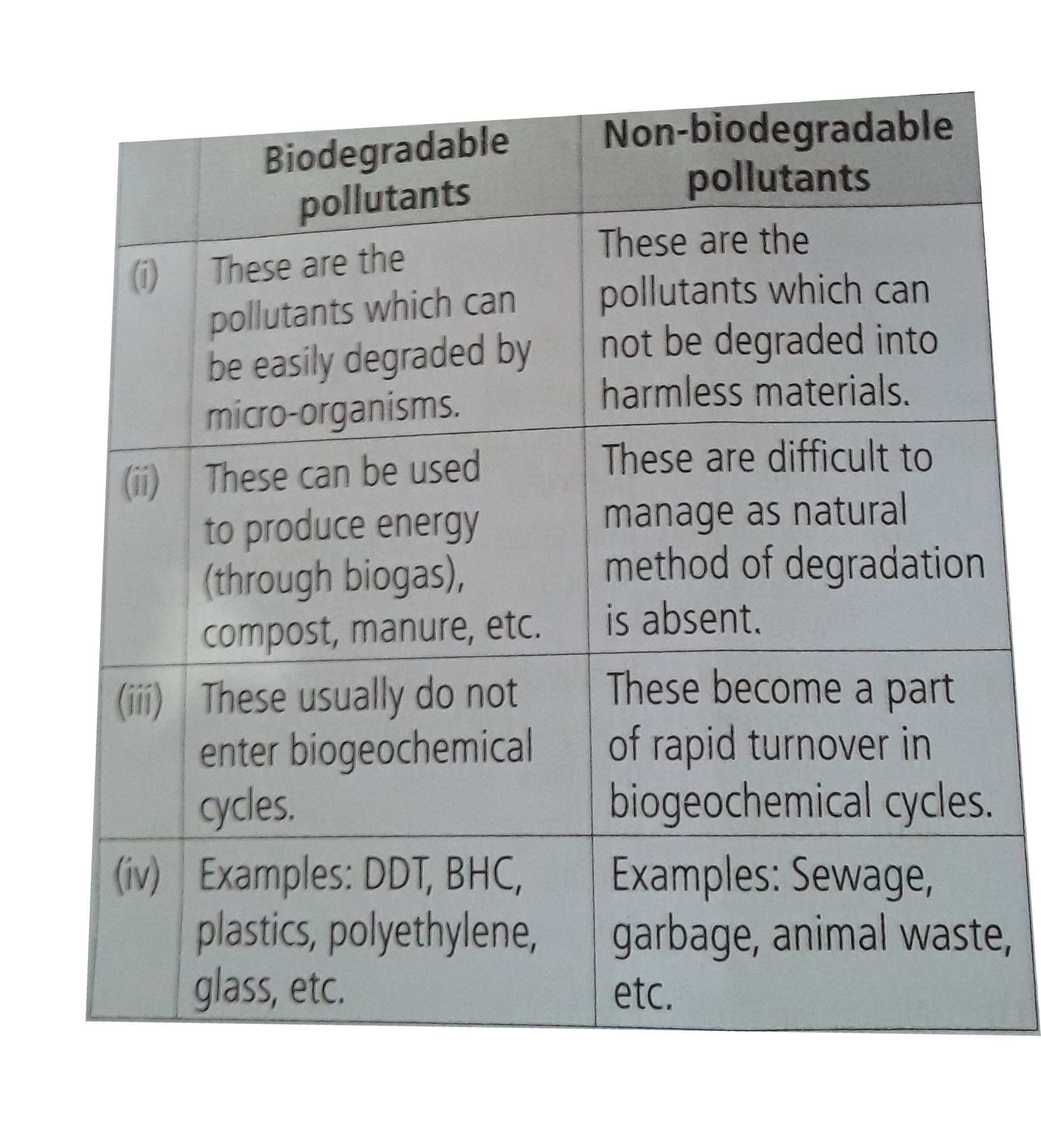Non-biodegradable pollutants are created by
Nature
Excessive use of resources
Humans
Natural disasters
The correct Answer is:C
Step-by-Step Solution:
1. Understanding Non-Biodegradable Pollutants:
- Non-biodegradable pollutants are substances that cannot be broken down or decomposed by natural processes. This means they remain in the environment for a long time without being converted into less harmful substances.
2. Identifying Sources of Non-Biodegradable Pollutants:
- The question asks about the creation of these pollutants. The options provided include:
- Nature
- Excessive use of resources
- Humans
- Natural disasters
3. Analyzing Each Option:
- Nature: While nature can produce some waste, it typically involves biodegradable materials that decompose over time.
- Excessive Use of Resources: This can lead to pollution, but it does not directly create non-biodegradable pollutants.
- Humans: Humans are responsible for the majority of non-biodegradable pollutants through industrial processes, waste disposal, and the use of synthetic materials.
- Natural Disasters: These can cause pollution but are not a direct source of non-biodegradable pollutants.
4. Conclusion:
- Based on the analysis, the primary source of non-biodegradable pollutants is humans. Examples of these pollutants include heavy metals (like arsenic, mercury, and lead), synthetic materials (like polythene), and pesticides (like DDT).
Final Answer:
- Non-biodegradable pollutants are primarily created by humans.
---
- Non-biodegradable pollutants are substances that cannot be broken down or decomposed by natural processes. This means they remain in the environment for a long time without being converted into less harmful substances.
- The question asks about the creation of these pollutants. The options provided include:
- Nature
- Excessive use of resources
- Humans
- Natural disasters
- Nature: While nature can produce some waste, it typically involves biodegradable materials that decompose over time.
- Excessive Use of Resources: This can lead to pollution, but it does not directly create non-biodegradable pollutants.
- Humans: Humans are responsible for the majority of non-biodegradable pollutants through industrial processes, waste disposal, and the use of synthetic materials.
- Natural Disasters: These can cause pollution but are not a direct source of non-biodegradable pollutants.
- Based on the analysis, the primary source of non-biodegradable pollutants is humans. Examples of these pollutants include heavy metals (like arsenic, mercury, and lead), synthetic materials (like polythene), and pesticides (like DDT).
- Non-biodegradable pollutants are primarily created by humans.
Topper's Solved these Questions
- ENVIRONMENTAL ISSUESBOOK - AAKASH SERIESCHAPTER - ENVIRONMENTAL ISSUESEXERCISE - Exercise-I (Air pollution)
42 Videos
- ENVIRONMENTAL ISSUESBOOK - AAKASH SERIESCHAPTER - ENVIRONMENTAL ISSUESEXERCISE - Exercise-I (Water pollution)
39 Videos
- ECOSYSTEMBOOK - AAKASH SERIESCHAPTER - ECOSYSTEMEXERCISE - EXERCISE-III (PREVIOUS AIPMT/NEET QUESTIONS)
37 Videos
- HISTOLOGY AND ANATOMY OF FLOWERING PLANTSBOOK - AAKASH SERIESCHAPTER - HISTOLOGY AND ANATOMY OF FLOWERING PLANTSEXERCISE - EXERCISE - III (PREVIOUS AIPMT/NEET QUESTIONS)
24 Videos
Similar Questions
Knowledge Check
Which of the following is a non-biodegradable pollutant ?
ADDTBSewageCPlant leavesDDomestic wastesThe following table summarises the differences between biodegradable and non-biodegradable pollutants. Pick out the wrong diggerences and select the correct answer.
 A(i) and (iv)B(ii) and (iv)C(iii) and (iv)D(ii), (iii) and (iv)
A(i) and (iv)B(ii) and (iv)C(iii) and (iv)D(ii), (iii) and (iv)Given below are four statements each with two blanks. Select the option which correctly fills up the blank in any two statements.
(i) Bhopal gas disaster took place on ___ 1994 and this day is now observed as the ____ day in India to make the anniversary of the Bhopal gas disaster.
(ii) ____ is a biodergradable pollutant while ___ is a non-biodegradable pollutant while ____ is a non-biodegradable pollutant.
(iii) When pollutants are released from a single point it is called ____ pollution, but when it is over a large area, then it is called ____ pollution.
(iv) _____ is the world's most problematic aquatic weed, introduced in India for its lovely flowers, also called as ____.A(i) December 5, National pollution prevention (iv) Parthenium, terror of BengalB(i) December 2, Bhopal gas tragedy (ii) DDT, sewageC(ii) Sewage, DDT (iii) point source, non-point sourceD(iii) line source, fixed source (iv) Eichhornia, tiger of Bengal
Polythene is a non- biodegradable pollutant .
View SolutionIs DDT a biodegradable pollutant ?
View SolutionSort out non-biodegradable and biodegradable pollutants among the following : Mercury salts, sewage, plant leaves, BHC, cadmium salts.
View SolutionRead the following statements carefully.
(i) An electrostatic precipitator removes particulate matter by imposing negative charge on them.
(ii) Catalytic converters convert unburnt hydrocarbons into CO2 and water.
(iii) Peroxyacyl nitrates (PAN) is a secondary pollutant.
(iv) DDT is a non-biodegradable pollutant.
Which of the above statements are incorrect ?
View SolutionWhich of the following are true ?
I. Benzene hexachloride is a non- biodegradable pollutants .
II. Anthropogenic air pollutants are natural in origin .
III. Carbon monoxide is a primary air pollutant .
IV. Sulphur dioxide cause brown air effect during traffic congestion in cities.
View Solution
